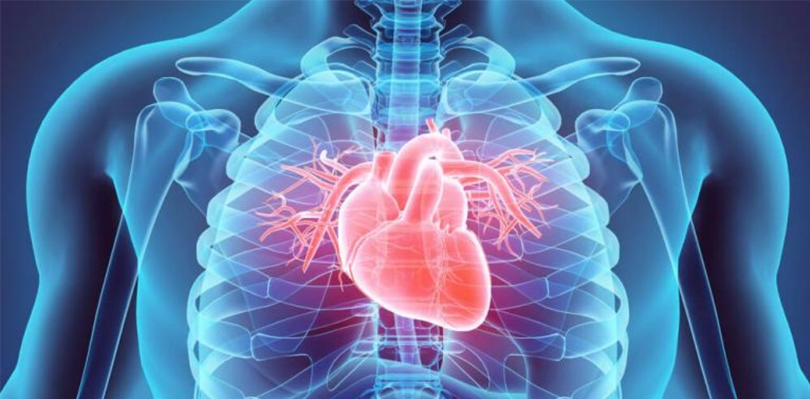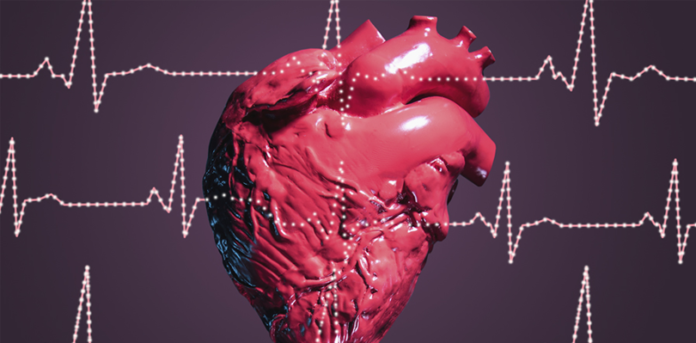Commotio Cordis refers to a rare but catastrophic event that occurs when a seemingly innocuous blow to the chest triggers a deadly arrhythmia. It is an alarming reminder that the human heart, despite its resilience, can succumb to a delicate vulnerability. In this blog post, we delve into the harrowing world of Commotio Cordis, aiming to shed light on this perplexing phenomenon and raise awareness about its risk factors, symptoms, and preventive measures.
However, we will explore the scientific details behind this condition, the sports most commonly associated with it, and the critical importance of prompt intervention in saving lives. Join us on this educational journey as we strive to arm ourselves with knowledge, we can work towards creating a safer sporting environment where athletes can pursue their passion with reduced risks and enhanced well-being.
What Is Commotio Cordis
It is a rare but potentially fatal condition in which a sudden blow or impact to the chest, usually during sports activities, leads to a disturbance in the heart’s electrical activity. This disruption can result in a lethal arrhythmia, causing the heart to stop pumping effectively.
Furthermore, the term “Commotio Cordis” translates to “agitation of the heart” in Latin. It primarily affects young athletes and can occur even with seemingly minor chest impacts. Immediate medical intervention, including CPR and defibrillation, is crucial for the survival of individuals experiencing agitation of the heart.
Causes Of Commotio Cordis A Sudden Death In Athletes

Commotio Cordis, a sudden and tragic occurrence in the realm of sports, takes the lives of young athletes with little warning. It is essential to understand the main causes behind this phenomenon in order to prevent its devastating consequences. Here are some primary causes of agitation of the heart:
Direct Chest Impact
Commotio Cordis occurs when a forceful blow directly strikes the chest, usually in the area overlying the heart. The impact can disrupt the heart’s electrical system, causing a lethal arrhythmia. The object that hits the chest can vary, ranging from a ball, puck, or even a player collision.
Location And Timing
The precise location and timing of the impact are critical factors in triggering agitation of the heart. The impact must occur during a specific vulnerable phase of the cardiac cycle, known as the repolarization period. This period coincides with a brief moment when the heart is electrically unstable, making it more susceptible to arrhythmias.
Projectile Velocity
The velocity at which the object strikes the chest plays a significant role in inducing Commotio Cordis. Higher velocities increase the likelihood of disrupting the heart’s electrical activity, making certain sports, such as ice hockey, baseball, lacrosse, or soccer, more prone to these incidents.
Chest Protection
Inadequate or insufficient chest protection can contribute to the risk of Commotio Cordis. Properly designed chest protectors or pads that are specifically engineered to absorb and distribute impact forces can significantly reduce the risk of a lethal arrhythmia.
Heart Position
The position of the heart within the chest cavity can influence the susceptibility to agitation of the heart. A heart that is closer to the chest wall, rather than being surrounded by a protective layer of muscle, is more vulnerable to external impacts.
Age And Gender
Research has shown that younger athletes, particularly those under 18 years old, are at a higher risk of experiencing Commotio Cordis. This increased vulnerability may be attributed to the chest wall being more compliant and the heart being more mobile in younger individuals. Furthermore, males are more commonly affected by agitation of the heart compared to females.
Training And Awareness
Insufficient training and awareness among athletes, coaches, and medical personnel regarding Commotio Cordis can contribute to delayed recognition and management of the condition. It is crucial to educate individuals involved in sports about the signs and symptoms of Commotio Cordis and emphasize the importance of immediate medical attention and cardiopulmonary resuscitation (CPR) in potentially saving lives.
By understanding these detailed causes of agitation of the heart, athletes, coaches, medical professionals, and sports organizations can take proactive measures to lessen the risks associated with this condition. Implementing appropriate safety measures, improving chest protection, and raising awareness can help create a safer sporting environment and reduce the occurrence of sudden deaths in athletes.
Treatments For Commotio Cordis
Immediate CPR
Cardiopulmonary resuscitation (CPR) is the cornerstone of initial treatment for agitation of the heart. If an athlete collapses and becomes unresponsive after a chest impact, bystanders should immediately initiate CPR, starting with chest compressions and rescue breaths. CPR helps maintain blood circulation and oxygen supply to vital organs until advanced medical assistance arrives.
Early Defibrillation
Early defibrillation plays a crucial role in treating agitation of the heart. If an automated external defibrillator (AED) is available nearby, it should be used as soon as possible. AEDs deliver an electrical shock to the heart to restore its normal rhythm, providing the best chance of survival.
Advanced Cardiac Life Support (ACLS)
Once medical professionals arrive at the scene, they will provide advanced cardiac life support. This includes administering medications, such as epinephrine, to support heart function and stabilize the cardiac rhythm. They will also monitor the athlete’s vital signs, administer oxygen, and manage any associated injuries.
Hospitalization And Monitoring
Following resuscitation, athletes who experience Commotio Cordis should be promptly transported to a hospital for further evaluation and monitoring. They may require admission to the intensive care unit (ICU) for close observation, cardiac monitoring, and treatment of any underlying injuries or complications.
Cardiac Evaluation
Athletes who survive Commotio Cordis should undergo a comprehensive cardiac evaluation to assess their heart’s structure and function. This evaluation may include an electrocardiogram (ECG), echocardiogram, stress test, and, in some cases, cardiac catheterization. Identifying any underlying heart conditions can guide further management and help prevent future incidents.
Prevention And Education
Prevention is a key aspect of managing Commotio Cordis. Athletes, coaches, and medical personnel should receive proper education and training on recognizing the signs and symptoms, performing CPR, and utilizing AEDs. Additionally, sports organizations should prioritize implementing measures to reduce the risk of chest impacts, such as improved chest protection and rule modifications.
By promptly initiating CPR, providing early defibrillation, and administering advanced cardiac life support, the chances of survival and positive outcomes for athletes affected by the agitation of the heart are significantly improved. Continued monitoring, thorough cardiac evaluation, and a focus on prevention and education are crucial in reducing the occurrence of this tragic condition in the future.
Preventions From Commotio Cordis
Protective Equipment
Adequate and properly fitted protective equipment is crucial in preventing Commotio Cordis. Athletes participating in sports with a risk of chest impacts, such as baseball, lacrosse, or hockey, should wear chest protectors specifically designed to absorb and distribute impact forces effectively. Sports organizations should enforce strict guidelines and regulations regarding the use of appropriate protective gear.
Rule Modifications
Modifying the rules of certain sports can help reduce the risk of agitation of the heart. For instance, in youth baseball, introducing softer balls or mandating the use of safety balls can minimize the force of impact during games. Rule changes that prioritize player safety and aim to minimize direct blows to the chest area can significantly reduce the incidence of Commotio Cordis.
Training And Education
Proper training and education are essential for athletes, coaches, and medical personnel to recognize the signs and symptoms of Commotio Cordis and respond swiftly. Athletes should be educated on the importance of reporting any chest impacts or symptoms they experience. Meanwhile, coaches should be knowledgeable in first aid, CPR, and AED usage. Regular training sessions can reinforce these skills and ensure preparedness in case of an emergency.
Sideline Medical Support
Having qualified medical personnel present at sporting events, particularly those with a higher risk of Commotio Cordis, is crucial. Trained medical professionals can provide immediate medical assistance, including early recognition, on-site CPR, and the prompt use of defibrillators. They can also assess athletes for underlying cardiovascular conditions that may increase the risk of Commotio Cordis.
Periodic Cardiac Screening
Implementing routine cardiac screening programs for athletes can help identify individuals with pre-existing heart conditions that predispose them to Commotio Cordis. These screenings may include a thorough medical history, physical examination, electrocardiogram (ECG), and, if necessary, additional cardiac testing. Identifying at-risk athletes and providing appropriate medical guidance and restrictions can help prevent sudden cardiac events, including Commotio Cordis.
By prioritizing the use of protective equipment, implementing rule modifications, and emphasizing training and education. Also by ensuring sideline medical support, and conducting periodic cardiac screenings, the risk of Commotio Cordis can be significantly reduced. These preventive measures contribute to creating a safer environment for athletes. By allowing them to participate in sports with reduced risks of sudden cardiac events.
What Doctors Say About Commotio Cordis
Doctors recognize it as a rare but serious condition that poses a significant risk to athletes. They emphasize the importance of prompt recognition and immediate medical intervention in cases of chest impacts during sports activities. Medical professionals stress the need for widespread education and awareness among athletes, coaches, and medical personnel. That helps to recognize the signs and symptoms of Commotio Cordis and respond appropriately.
Additionally, doctors advocate for preventive measures such as proper protective equipment, and rule modifications. Also, periodic cardiac screenings to reduce the incidence and potentially devastating consequences of this in the athletic community.
FAQs
What Are The Common Signs And Symptoms Of Commotio Cordis?
It can cause an immediate loss of consciousness or collapse in the affected athlete. Other associated symptoms may include chest pain, difficulty breathing, palpitations, and nausea. It’s important to note that in some cases, there may be no obvious symptoms before the sudden collapse occurs.
Are There Any Known Risk Factors For Commotio Cordis?
Certain sports pose a higher risk of Commotio Cordis due to the nature of their activities. Sports such as baseball, hockey, lacrosse, and soccer have been associated with a higher incidence of Commotio Cordis. Age and gender are also factors, with younger athletes (particularly those under 18) being more susceptible. However, males are more commonly affected.
How Can Commotio Cordis Be Prevented?
Prevention of Commotio Cordis involves various strategies. Proper protective equipment, such as chest protectors or pads designed to absorb impacts, is crucial. Rule modifications in sports that minimize direct blows to the chest area can also help prevent these incidents. Comprehensive training and education for athletes, coaches, and medical personnel on recognizing the signs of Commotio Cordis. Also, providing immediate CPR and defibrillation is vital. Regular cardiac screenings can identify individuals with pre-existing conditions that increase the risk of Commotio Cordis. It also helps to guide their participation in sports.

